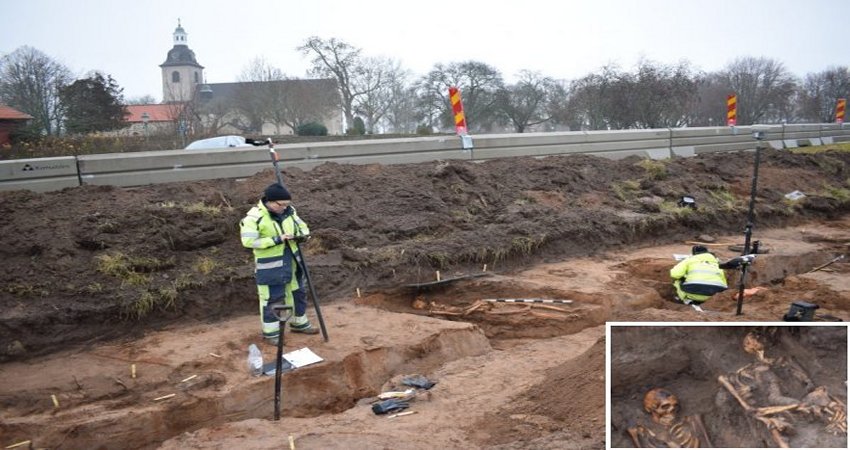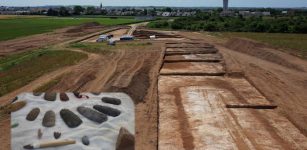Sunken Land Of Lyonesse: Legendary Kingdom That Influenced Stories Of Writers And Fishermen
MessageToEagle.com – According to medieval tradition, there was a mysterious land – Lyonesse – that was outside the southwest of England. The legends of this sunken kingdom appear in both Cornish and Breton mythology.
Are there any facts that can support it? What is the connection between Lyonesse and King Arthur or the Celts?
According to the English poet Tennyson, “the lost land Lyonesse”, where apart from the Isles of Scilly – all now is wild sea”.
The question is: Have Lyonesse ever been anything more than Tennyson’s romantic dream?
Flood catastrophes are in traditions of many ancient cultures, in Asia, Australia, Pacific Ocean region and Amerika. Many medieval tales and legends from the British coast and Bretagne, France say about a land that vanished.
Lyonesse Disappeared Under Water In A Single Night
The oldest written account of a lost country outside Cornwall’s coast is described in “Irinerar” dated to 14th century and written by William of Worcester, who mentions fields, forests, and 140 parish churches that disappeared in the region of the Isles of Scilly, an archipelago of around a hundred islands and islets southwest of Land’s End in Cornwall, southwestern Britain.
A Cornish poet, antiquarian and Elizabethan gentleman, Richard Carew, identified this so-called “Irinear” with Lyonesse mentioned in the Arthurian Saga, and his report on the subject, appeared in Britannia and in his “Survey of Cornwall”(1602).
He writes:
“The encroaching sea hath ravined from it [Cornwall] the whole country of Lionesse, together with divers other parcels of no little circuit, and that such a Lionesse there was these proofs are yet remaining. The space between the land’s end and the Isles of Scilly, being about thirty miles, to this day retaineth the name, in Cornish Lethowsow, and carrieth continually an equal depth of forty or sixty fathom (a thing not unusual in the sea’s proper dominion) save that about the midway there leith a rock which at low water discovereth his head. They term it the Gulfe, suiting thereby the other name of Scilla.”
Carew also reports that fishermen casting their hooks in this location have drawn up pieces of doors and windows.

In his “Portrait of the Isles of Scilly”, C. Mumford also mentions Lyonesse and the Isles of Scilly. According to local legend, the Isles of Scilly are the remnants of the lost land of Lyonesse, a piece of country which once upon a time joined the islands to Lands End (and included St Michael’s Mount) and which was drowned by a huge flood never to reappear.
See also:
Legend Of Kitezh – Ancient Underwater City And Its Doomsday Prophecy
Legend Of Brigadoon: Mythical Village Where Time Stands Still
Mythical Kingdom Of Prester John – Did It Exist?
More Fascinating Myths And Legends From All Across The World
This catastrophe was supposed to have occurred in the sixth century at the time of the legendary King Arthur and the Knights of the Round Table.
In medieval Arthurian legend, there are links to Lyonness that bordered Cornwall. It was the kingdom of the hero Tristan, whose father was king. In Celtic mythology, there are also similar stories to that of Lyonesse.
Another significant source that considerably influenced the story of Lyonesse is the flooding of the Isles of Scilly and Mount’s Bay near Penzance, the most westerly major town in Cornwall.
Interestingly, the name of St Michael’s Mount – in Cornish, is ‘Karrek Loos y’n Koos’, which means – “the grey rock in the wood”.
People who live in the region of Penzance, experience sightings of a sunken forest in Mount’s Bay.
Occasionally, at extreme low water, petrified tree stumps become visible.
Standing on the tip of Land’s End in southwestern England (if weather conditions are good) and looking across the water towards the Isles of Scilly, one can quite easily imagine the remains of a once thriving kingdom.
Perhaps we will never know what really might have inspired ancient stories of fishermen. Was it the sight of these submerged villages that might have inspired fishermen to tell the tale of Lyonnesse?
Copyright © MessageToEagle.com All rights reserved. This material may not be published, broadcast, rewritten or redistributed in whole or part without the express written permission of MessageToEagle.com
Expand for references










